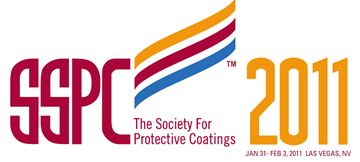Search
Products tagged with '2011 Conference Papers'
View as
Sort by
Display
per page
A Study on Rapid Cure Non-Skid Coating System for Exposed Deck of the Marine Vessels
Product Number:
41211-620-SG
Publication Date:
2011
$20.00
An Introduction To Low Pressure, Ambient Temperature Polyurea Spraying
Product Number:
41211-616-SG
Publication Date:
2011
$20.00
Angles and Demons in the Realm of Protective Coatings: The Underworld of VOCs
Product Number:
41211-636-SG
Publication Date:
2011
$20.00
Application Study on the Performance of Polyurethane Paint as a Green Coat Using Biobased Coconut Polyol Resin for Protective, Marine and Industrial Coatings
Product Number:
41211-602-SG
Publication Date:
2011
$20.00
Architectural and Industrial Maintenance (AIM) Regulatory Update and Forecast
Product Number:
41211-599-SG
Publication Date:
2011
$20.00
Bioprefered Federal Biobased Products Preferred Procurement Program
Product Number:
41211-644-SG
Publication Date:
2011
$20.00
Blasting and Painting the Exteror of Three Five-Million Gallon Lead-Based Paint Coated Tanks without an Enshrouding Containment
Product Number:
41211-638-SG
Publication Date:
2011
$20.00
Case Study: Bridging the Gap: The Construction of the Pearl Harbor Memorial Bridge: Temporary Colloring to Cure COncrete on a 210 ft. / 40’ Wide Span
Product Number:
41211-649-SG
Publication Date:
2011
$20.00
Cathodic Nanocoating Technology for Corrosion Control of Steel Structures
Product Number:
41211-613-SG
Publication Date:
2011
$20.00
Cleaning and Painting Techniques and Practices used on Commercial Stores
Product Number:
41211-626-SG
Publication Date:
2011
$20.00
Coating Problems Faced by Commercial Building Owners
Product Number:
41211-657-SG
Publication Date:
2011
$20.00












